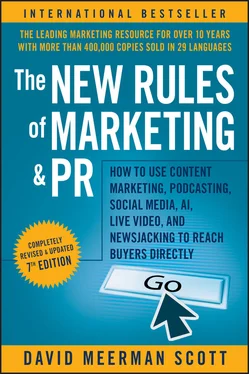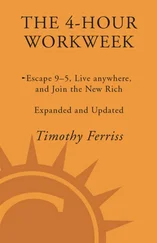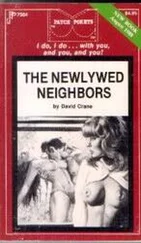“Don’t let your money go down the drain! Call Big Birge Plumbing Company. For all your plumbing needs!” The clever, if punny, writing personalizes Big Birge Plumbing Company, making it stand out from the rest of the market. When the vast majority of plumbers either don’t have a site or just maintain a basic one with straightforward facts and contact info, being different gets you noticed. The Big Birge Plumbing Company site uses fun original photos, has a great design, and showcases the company’s humorous personality.
Here’s how Lallenia introduces herself on the Meet Big Birge page: “Hi! Unlike my husband, I do NOT have years and years of plumbing experience nor have I dug ditches in 100-degree weather. Honestly I’m pretty sure my husband has had to use our drain cleaner at our house more than most of his ‘regular’ customers (pun intended). I did not realize you aren’t supposed to flush wax down the toilet or not place all the food scrapes [ sic ] off the plate into the garbage disposal! (Whoops!)”
The fun carries over to the design of their trucks (Lallenia with a “gasp” expression, peering into a toilet filled with money) and to their social media presence, including Facebook.
In a crowded market—there are more than 400 plumbing companies in the Omaha area—Big Birge Plumbing Company has grown very quickly in less than five years in business.
“Our very first year, we received Best of Omaha due to our marketing online via social media and the image we display,” Lallenia says. “This is a major award in our city, and we came out of nowhere. We have won it two years in a row now.”
Big Birge Plumbing Company shows that anyone with a smartphone and a focus on reaching buyers online can grow a business, even in a very competitive market. When I checked recently, Big Birge Plumbing was ranked on the first page of the Google results for “Omaha Plumber.” That’s amazing, considering the company is only a few years old. You can achieve the same result in your market.
Buyer Personas: The Basics
Smart marketers understand buyers, and many build formal buyer personas for their target demographics. (I discuss buyer personas in detail in Chapter 10.) It can be daunting for many of us to consider who, exactly, might be interested in our products and services and is visiting our site and checking out our content. But if we break the buyers into distinct groups and then catalog everything we know about each one, we make it easier to create content targeted to each important demographic.
For example, a college website usually has the goal of keeping alumni happy so that they donate money to their alma mater on a regular basis. A college might have two buyer personas for alumni: younger alumni (those who graduated within the past 10 or 15 years) and older alumni. Universities also have a goal of recruiting students by driving them into the application process. The effective college site might have a buyer persona for the high school student who is considering college. But since the parents of the prospective student have very different information needs, the site designers might build another buyer persona for parents. A college also has to keep its existing customers (current students) happy.
That means a well-executed college site might target five distinct buyer personas, with the goals of getting younger and older alumni to donate money, high school students to complete the application process, and parents to make certain their kids complete it. The goals for the current students aspect of the site might be making certain they come back for another year, plus answering routine questions so that staff time is not wasted.
By truly understanding the needs and the mind-sets of the five buyer personas, the college will be able to create appropriate content. Once you understand these audiences very well, then (and only then) you should set out to satisfy their informational needs by focusing on your buyers’ problems and creating and delivering content accordingly. Website content too often simply describes what an organization or a product does from an egotistical perspective. While information about your organization and products is certainly valuable on the inner pages of your site, what visitors really want is content that first describes the issues and problems they face and then provides details on how to solve those problems.
Once you’ve built an online relationship, you can begin to offer potential solutions that have been defined for each audience. After you’ve identified target audiences and articulated their problems, content is your tool to show off your expertise. Well-organized web content will lead your visitors through the sales cycle all the way to the point when they are ready to buy from or otherwise commit to your organization.
Understanding buyers and building an effective content strategy to reach them are critical for success. And providing clear links from the content to the place where action occurs is critical.
“Slacker.” “Hippie.” “Freak.” “Get a job.” “You look like a girl.” “Unprofessional!”
After hearing these and all sorts of other snide comments about their atypical personal grooming choices, Chris Healy and Lindsay Barto founded The Longhairs. This global community advocates for, educates, and celebrates men with long hair.
Why? “Because longhairs are badass,” their site says. “From Samson to Jesus to George Washington, real men let it ride. Don’t let ’em convince you otherwise.” Healy and Barto realized early on that women are taught from birth on how to care for, style, and manage long hair. But men haven’t had that luxury. So the duo created a blog to serve this unmet need. And now that they’ve gathered a vibrant community on their popular blog, they are starting to sell products, initially Hair Ties for Guys.
“Content is absolutely the cornerstone of our community,” Healy says. “In fact, we began with no product—or really almost anything at all. We just started with three or four blog posts, and we had a pretty good idea that there would be lots of content that we could come up with. I think the first four blog posts were ‘Long Hair at High Speed,’ ‘Six Tips for Guys with Long Hair,’ and a couple of other really basic ones. But we decided from the very beginning that content was going to be the backbone of our community and our business.”
The site is beautifully designed. That’s not surprising when you learn that Healy and Barto also run Round Two Creative Group, a creative studio in San Diego, California. But consistency is their key to success. As I write this, they’ve blogged every week for more than 100 weeks.
“The blog content is written within the three categories of our mission,” Healy says. “We advocate for men with long hair. For millennia men who are leaders, warriors, scientists, and politicians have all had long hair. Only in the past century has it become ‘unprofessional’ to have long hair. There are employers who won’t hire men with long hair, and the stereotypes are well documented. One of our content categories is the Longhairs Professional Series. We interview CEOs, business owners, and other successful professionals with long hair to illustrate that you can in fact be a successful professional.”
For example, there is a conversation with Dave Littlechild, a successful business professional from the United Kingdom. Littlechild has lived around the world building businesses, most recently as executive vice president for dotmailer, the largest email marketing software firm in the UK.
The educational content of the blog is focused on addressing that male knowledge gap about long hair. “We’ve got no idea what to do or how to brush it,” Healy says. “Is it okay to do a ponytail? How do I braid it? None of these things we know about. Before The Longhairs, the only place to learn was women’s blogs, websites, magazines, or asking our moms and our sisters about it. And frankly, some of the videos can be a little uncomfortable for men to watch. We help guys by teaching them, ‘Hey, you don’t need to be a hair expert, but there are a few things every guy with long hair needs to know. We got it. You need it. Here it is. Let us help you out and show you how to do these things.’
Читать дальше












